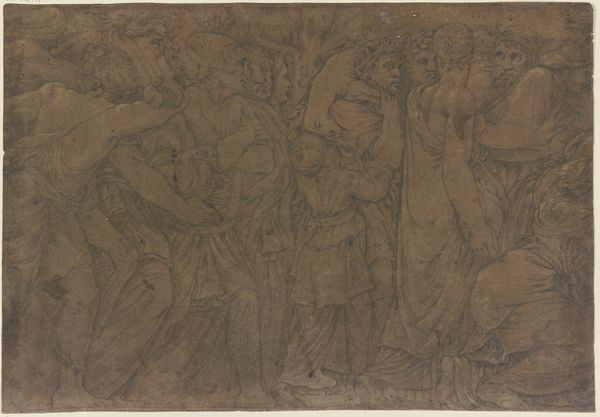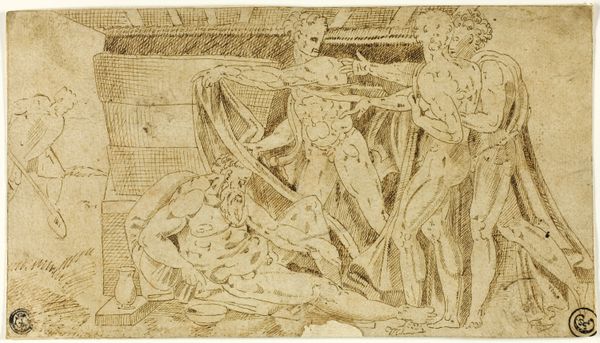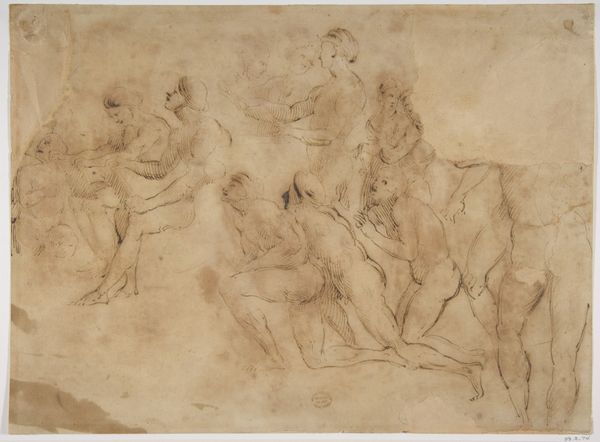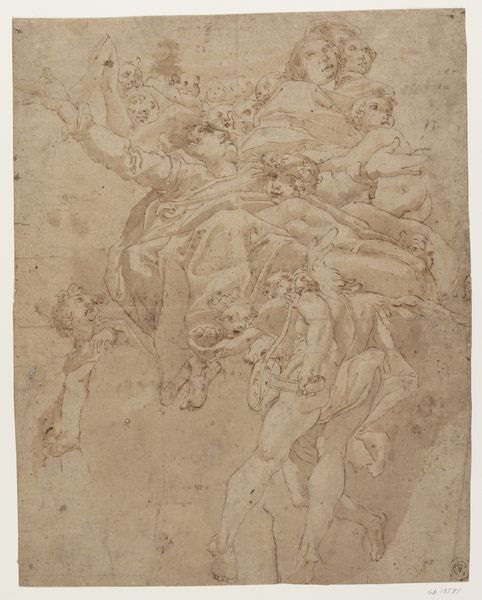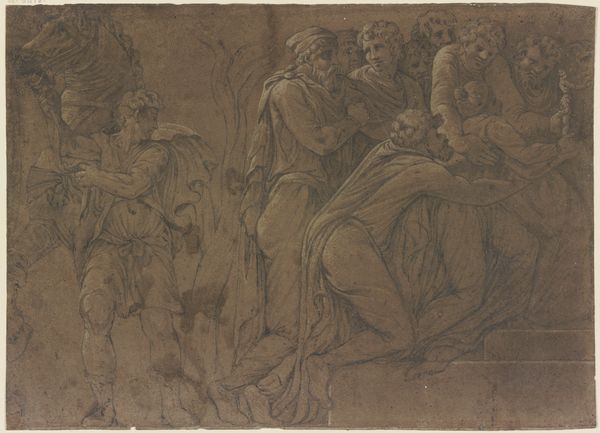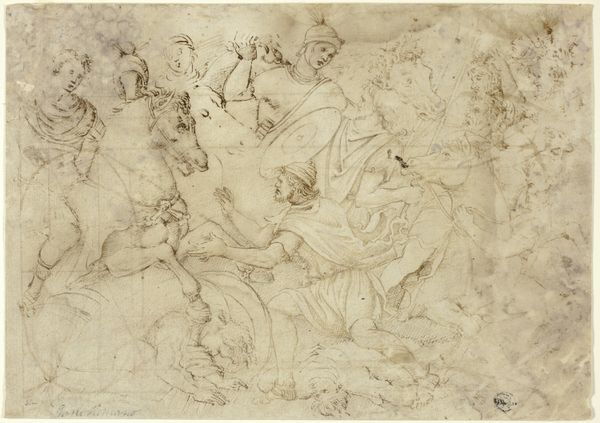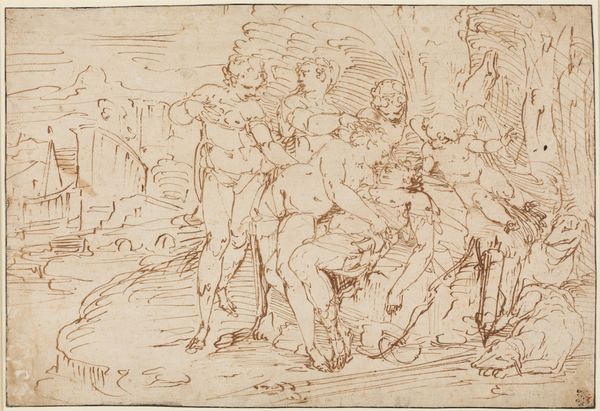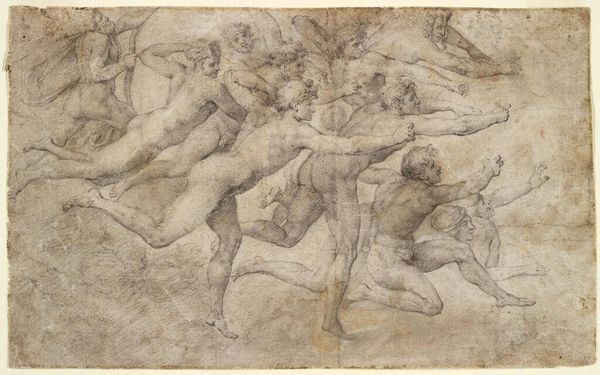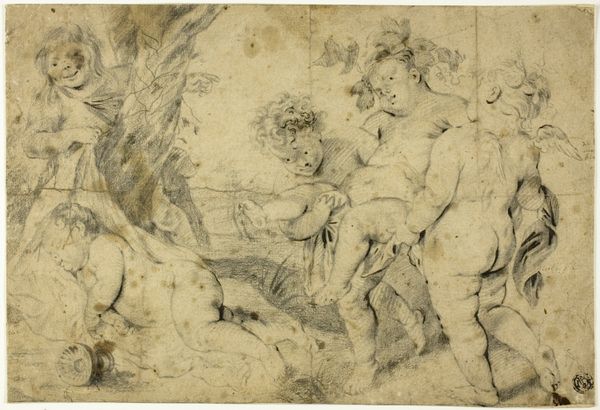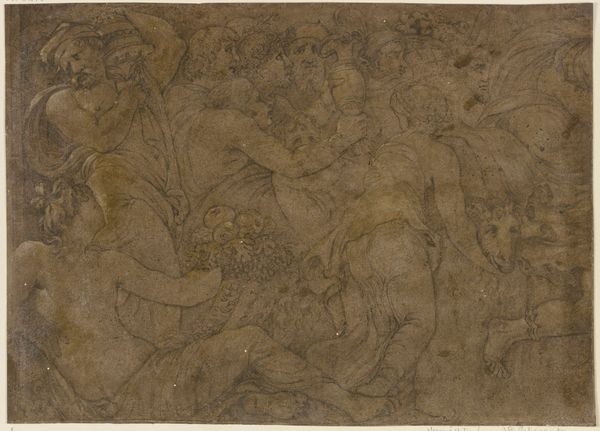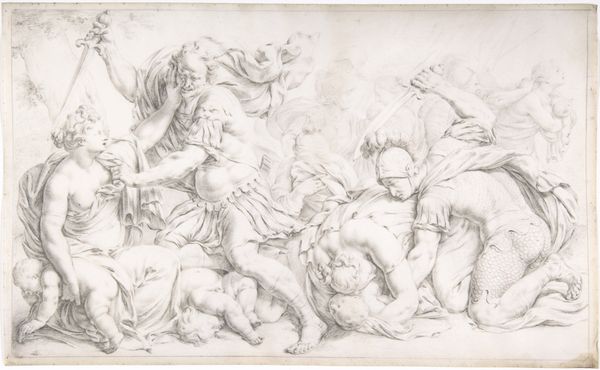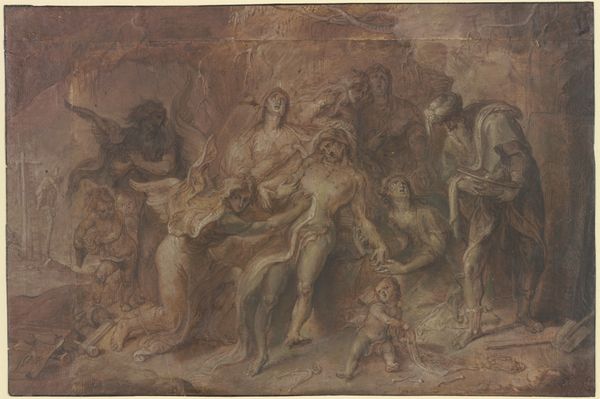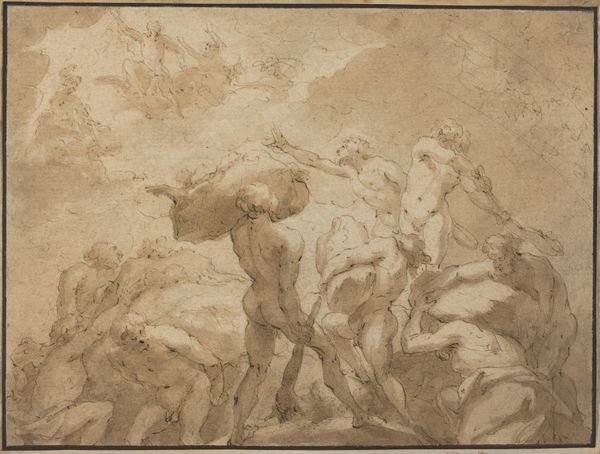
Copy in Reverse Design Orientation: Based on the Group of Reclining Figures at Left in Domenico Beccafumi's Scene of Moses Striking the Rock in the Pavement of Siena Cathedral 1596
0:00
0:00
drawing, print, ink, charcoal
#
portrait
#
drawing
# print
#
charcoal drawing
#
figuration
#
11_renaissance
#
ink
#
pencil drawing
#
charcoal
#
history-painting
#
italian-renaissance
Dimensions: 5 7/8 × 8 7/8 in. (15 × 22.5 cm), original sheet
Copyright: Public Domain
Curator: Look at this intriguing study attributed to Domenico Beccafumi, dating back to around 1596. It's aptly titled "Copy in Reverse Design Orientation: Based on the Group of Reclining Figures at Left in Domenico Beccafumi's Scene of Moses Striking the Rock in the Pavement of Siena Cathedral." Made with charcoal and ink on paper, and it’s currently held at the Met. Editor: My initial reaction is one of… languid contemplation. The figures, rendered in this soft, sepia-toned medium, seem to be suspended in a state of exhausted repose, almost melancholic. The reversed image further emphasizes this mood, turning everything inward. Curator: Indeed, Beccafumi clearly had a focus on process, evidenced in the multiple lines and the careful cross-hatching used to develop form. This technique makes us really consider how images of luxury and supposed divinity were produced; we get insight into the real human labor behind these polished marble floors, where Beccafumi labored for several decades, producing images for those floors as well. Editor: The symbolism of reclining figures – a visual cue suggesting both weariness and a sort of casual decadence. It is such a clever artistic and theological choice, too, placing a quotidian spin on the miraculous story of Moses. But there is a broader iconography here; the motif of seeking refreshment. Think of the exodus from arid landscapes, and, symbolically, from spiritual desolation. This particular imagery might echo through countless depictions of deliverance, hope, and finding solace, for those viewers then and even now. Curator: And let's not overlook the reversal. This “Copy in Reverse” speaks to the material process of printmaking. These reversal techniques offer fascinating windows into the collaborative modes of creating sacred spaces – what was being shared among artist studios and craftsmen? What information about design was transmitted across locations and makers? Editor: Quite right! Consider, though, that reversal carries inherent symbolic weight. What is flipped may present the inverse: shadows instead of light, uncertainty instead of clarity. So a reversed Moses can carry messages of spiritual or psychological states. Curator: Studying process alongside that cultural resonance – I am just left wondering how audiences interacted with images such as these, spread far and wide through this meticulous printing process, carrying a whole array of aesthetic, and even theological propositions, everywhere they landed. Editor: Ultimately, images can convey so many ideas, regardless of where and how they are produced. What an eloquent summary of hope, doubt, and, ultimately, finding resolution—encoded within what, at first glance, might seem a mere study of Renaissance style.
Comments
No comments
Be the first to comment and join the conversation on the ultimate creative platform.
